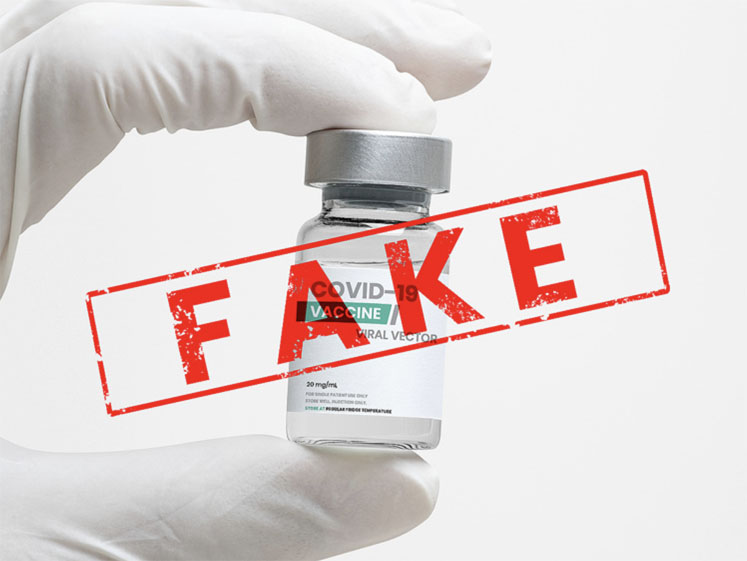Trade in counterfeit medicines is one of the largest fraud markets in the world, worth in excess of $200 billion per year. It spans organised large-scale trafficking of fake drugs by criminal gangs to small traffickers pursuing illicit sales at a local level.
The COVID-19 crisis is having an impact, too, and fuelling the counterfeit problem: criminals are taking advantage of the pandemic to market and distribute fake pharmaceuticals, spurred on by increased demand and a shortage of basic drugs and medicines.
Every year, we continue to see Interpol, Europol and national medicines agencies seize dozens of falsified medicines and close hundreds of illegal websites.
Indeed, a report published by Europol’s Intellectual Property Office (EUIPO) in 2019 estimates that counterfeit medicines cost the EU pharmaceutical sector more than €10 billion annually in lost revenue.
Illicit pharmaceuticals, or those with a vague provenance, can threaten people’s lives as well as wreak havoc on corporate reputations and inhibit investment in new product development, research indicates.
So, in a bid to tackle the problem, the EU brought in the Falsified Medicines Directive (FMD) in early 2019, which utilises mandatory safety features and an EU-wide database to help stem fake or counterfeit medicines which could endanger lives, reaching people.
However, now that the Britain has left the EU, the Directive no longer applies — except in Northern Ireland, owing to the Northern Ireland Protocol — and the Medicines and Medical Devices Act 2021 has come into force to provide a regulatory framework, which include proposals to develop a nationwide anticounterfeiting scheme.
But these are seen as broad and, despite the intention, it’s likely we will continue to see an influx of counterfeit medicines; organisations such as the IHMA has echoed calls by the National Pharmacy Association that, in the interests of patient safety, there should be “the continuation of an anticounterfeit system.
However, not [one] necessarily governed by the rules of FMD.” The Royal Pharmaceutical Society has also voiced its concern about the issue, pressing the government in 2020 to come up with “robust plans” to ensure counterfeit medicines don’t enter the supply chain.

So, currently, where do we stand? The door remains open to crafty criminals, who seemingly go from strength to strength in infiltrating global supply channels, deploying scams and counterfeiting measures to trick consumers and damage manufacturers.
However, in defence, overt pharmaceutical packaging technologies such as security holograms have a key role to play in fighting the counterfeiters because they are very difficult to forge.
When holograms first started to appear on pharmaceutical packaging more than 10 years ago, they offered a deterrent; and, because they work very well as extremely cost-effective authentication devices, they’ve evolved as counterfeiting activity has become ever more sophisticated.
If you look at a modern hologram, all sorts of visible changes occur that cannot be recreated by photocopying. Machine readable features can also be added that can be detected by a laser or smartphone QR reader.
With Scotland, England and Wales no longer connected to the medicines verification system, pharmaceutical manufacturers should still be worried about the uncertainty and supply chain vulnerable to fake medicines.
Furthermore, items such as falsified medicines and drugs bought online pose a terrible threat and can endanger lives — global demand for these and other treatments drives lucrative criminal enterprises.
Indeed, news that people are being duped into buying fake COVID tests couldn’t have come at more difficult time, strengthening the urgent need for manufacturers and law enforcement agencies to step up investment in anticounterfeiting measures that include product security devices.
Counterfeit coronavirus testing kits have been sold and online scams have risen during the health crisis, with criminals exploiting millions of people now working from home.
The COVID situation really enhances the speed of product in the marketplace and doesn’t offer a lot of time to provide all the high security anticounterfeiting systems that can usually be implanted.
However, regardless of any forthcoming new measures, the latest track and trace holographic systems remain a fast, effective frontline security device in the battle to protect against the threats and keep medicines — and people — as safe as possible in Britain’s post-Brexit landscape.
Holograms can be effective in the frontline fight against counterfeiters and fraudsters, protecting brands and profits. Those involved in the supply chain are reassured by their presence on products, recognising the security and financial benefits provided.
The use of well-designed and properly deployed authentication solutions, as advocated by the ISO12931 standard, enables those with law enforcement responsibility to verify the authenticity of a legitimate product, differentiating it from fake products coming from counterfeiting hot spots in Asia and eastern Europe.
Even those that carry a “fake” authentication feature can be distinguished from the genuine item if that item carries a carefully thought-out authentication solution.




